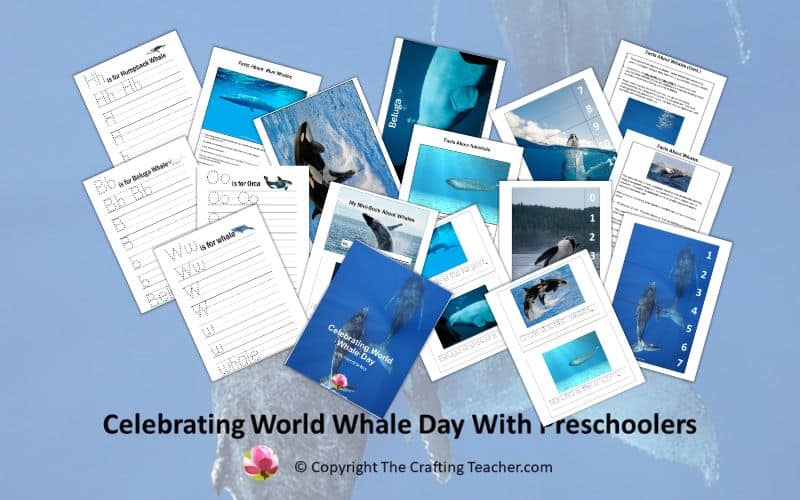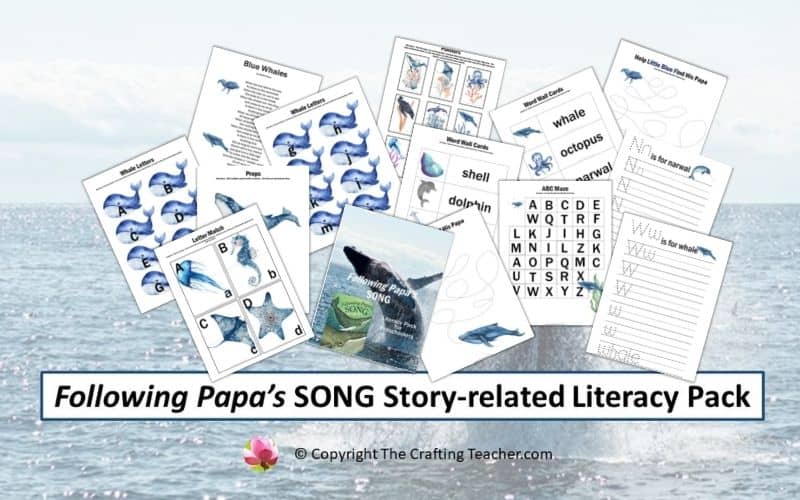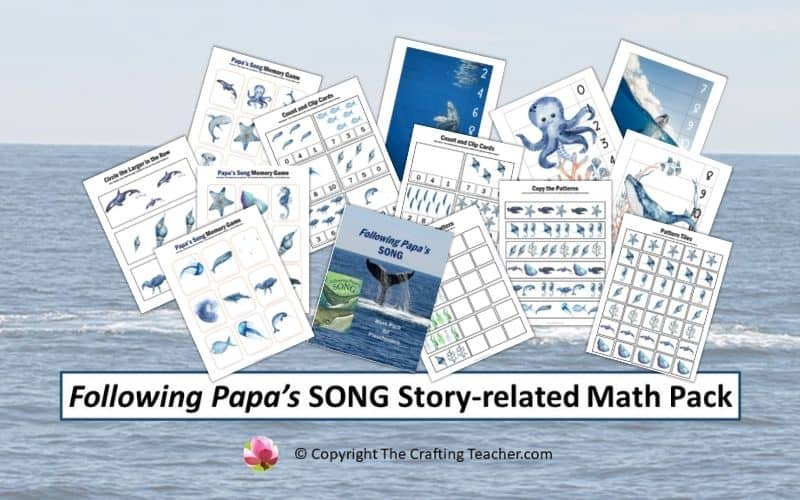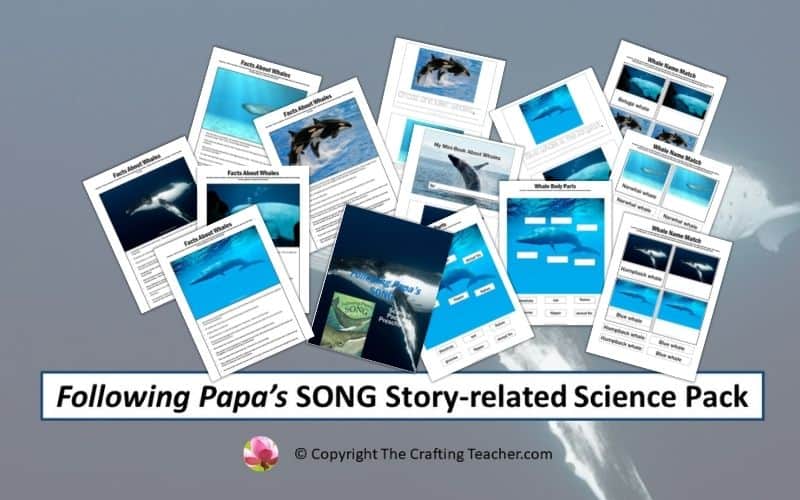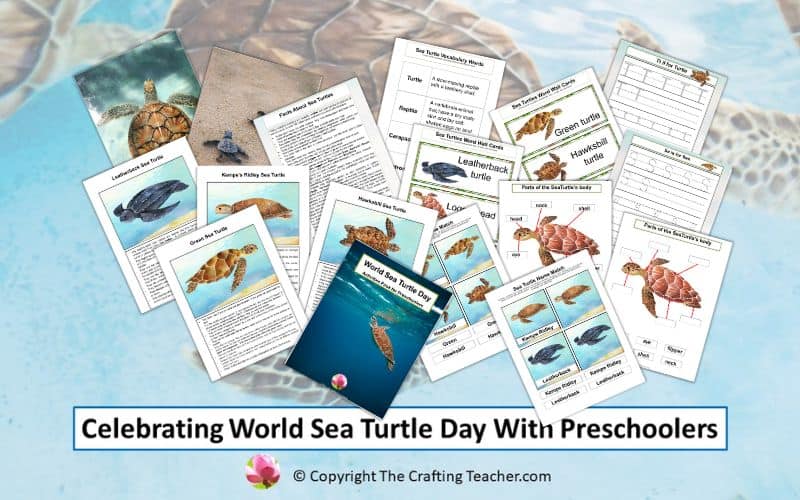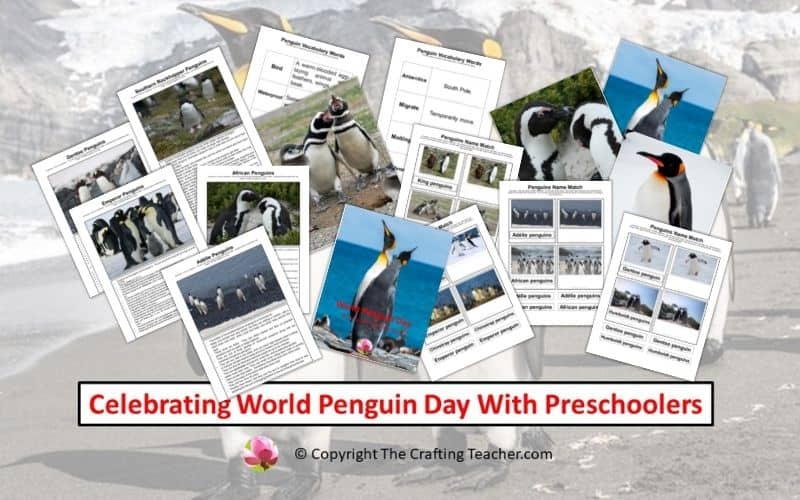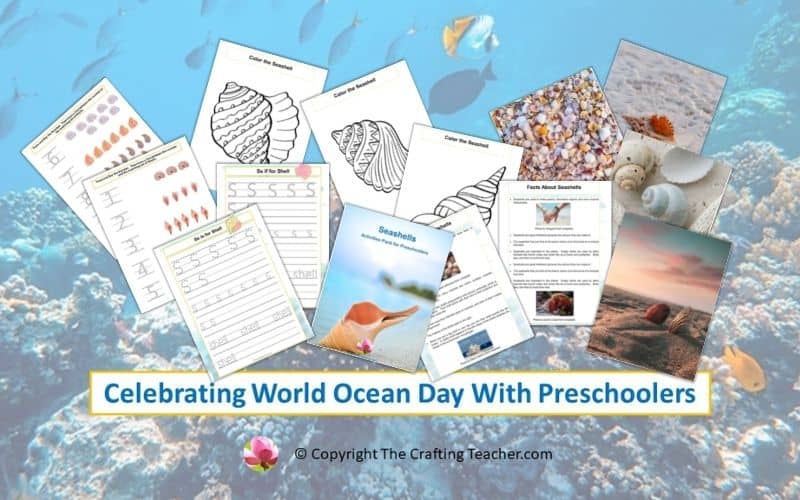Celebrating World Whale Day with Preschoolers
Affiliate Disclosure: “This post contains affiliate links, which means I receive a small commission, at no extra cost to you, if you make a purchase using those links.”
World Whale Day is celebrated every year on the third Sunday in February around the globe. This year it will be celebrated on February 18th to raise awareness about these incredible oceanic mammals, which are threatened or endangered due to human practices that are impacting negatively on their habitat, and encourage people to take action to protect them.
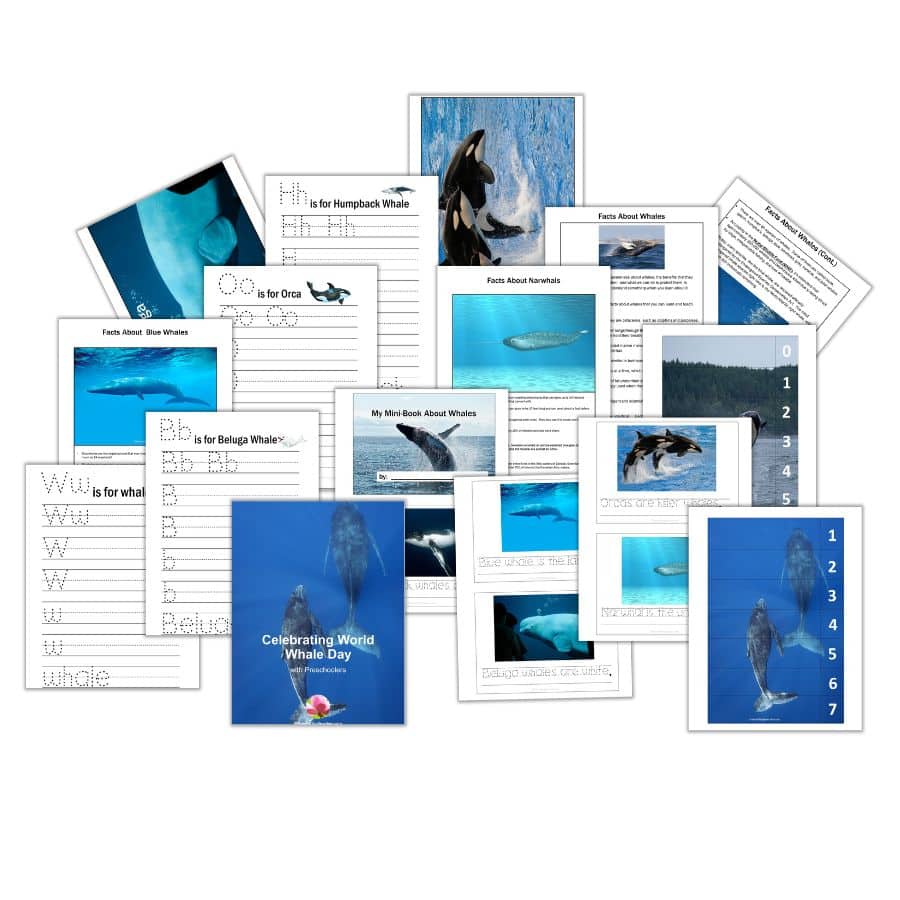
This post contains a FREE 28-page long World Whale Day pack which includes facts and real pictures of some of my favorite whales, letter tracing pages, vocabulary words, puzzles, and a mini book, ready to be downloaded at the end of this post.
Importance of World Whale Day
Whales are an important part of our ocean’s ecosystem. They help remove carbon from the atmosphere, produce oxygen, combat climate change, and help maintain fish populations. All of this means that their extinction would be devastating to our planet, and right now, some species of whales, especially the North Atlantic right whale are already endangered.
World Whale Day highlights the conservation efforts that many organizations are doing to protect the whales, promote the marine environment preservation, and educate people across the globe about what are the things we are doing to harm and potentially destroy these magnificent giants and other marine life, and what we can do avoid this.
History of World Whale Day
World Whale Day celebration began in 1980 thanks to Greg Kauffman, the founder of the Pacific Whale Foundation, who wanted to raise awareness about the threat of extinction faced by humpback whales that used to swim off the coast of Maui, Hawaii.
Since then, Maui Whale Festival’s main focus has been to raise awareness and educate, not only about the humpback whales, but how the pollution caused by toxic contaminants such as chemicals, oil spills, plastic litter, and industrial waste are destroying the oceans, and to promote the desire to take action to preserve this crucial natural habitat.
Today, people all over the world celebrate this day to help protect other whale species as well.
Facts About Whales
The most vital way to raise awareness about whales, the benefits that they bring to our planet’s ecosystem, and what we can do to protect them, is education. It is easier to understand something when you learn about it because it becomes real.
Here are some interesting facts about whales that you can learn and teach about:
- Whales are not fish. They are cetaceous, such as dolphins and porpoises.
- They breathe air into their lungs through their blowhole, located on top of their heads, but they can hold their breath for long periods.
- They are also warm-blooded marine mammals that feed milk to their babies and have very little hair.
- Their milk has a texture similar to toothpaste.
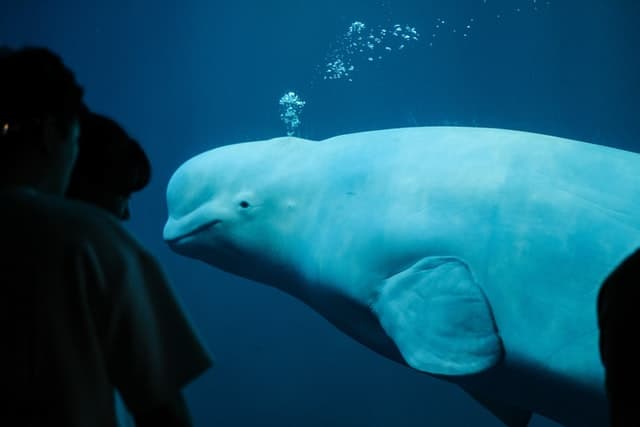
- They only have one baby at a time, which gets nursed for over a year.
- They have a thick layer of fat under their skin that protects them against the cold and stores energy used when they migrate to warm waters to breed.
- They are extremely intelligent and scientists believe they have feelings, similar to humans.
- No two whale tails are identical. Each whale has a unique tail, that identifies it, including the color, shape, the undersides of its flukes, and other physical characteristics, such as barnacles and scars.
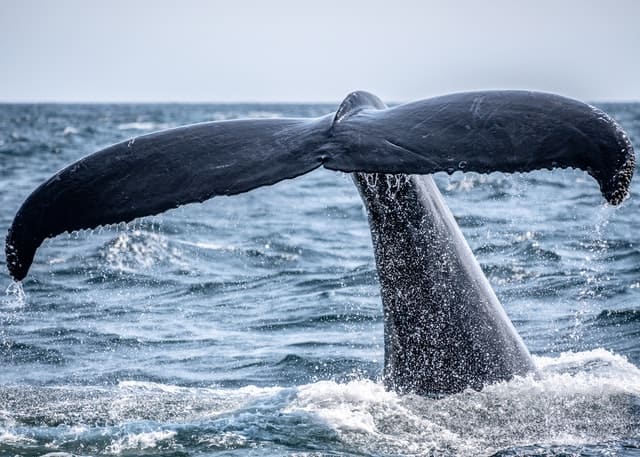
- Whale barnacles are species of acorn that attach themselves to whales using an adhesive substance to glue themselves permanently in place.
- Many different species of whales can communicate with each other by using sounds and even songs, like Humpback whales. The Humpback Whale is the most famous singing whale, and its song consists of consecutive vocal sounds that males repeat in complex patterns.
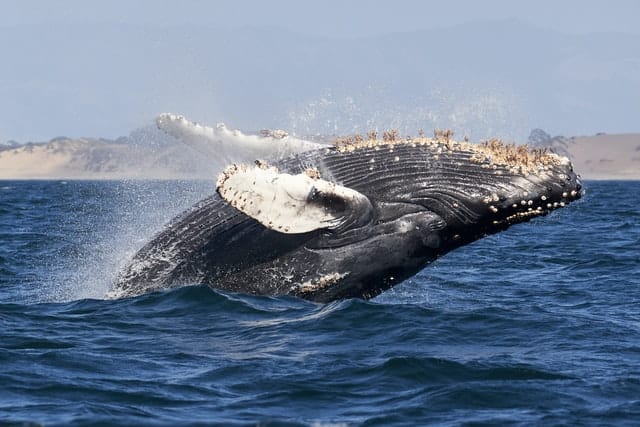
- Whales are divided into two suborders, the toothed whales and the baleen whales.
- The toothed whales have teeth, and they prey on squid, fish, squid, other small whales, and marine mammals.
- The baleen whales have bristles made out of keratin instead of teeth, that act as a filter collecting plankton, krill, and small crustaceous.
- The blue whale (a baleen whale) is the largest animal in the world. It grows up to 98 feet in length, and weight like 24 elephants put together.
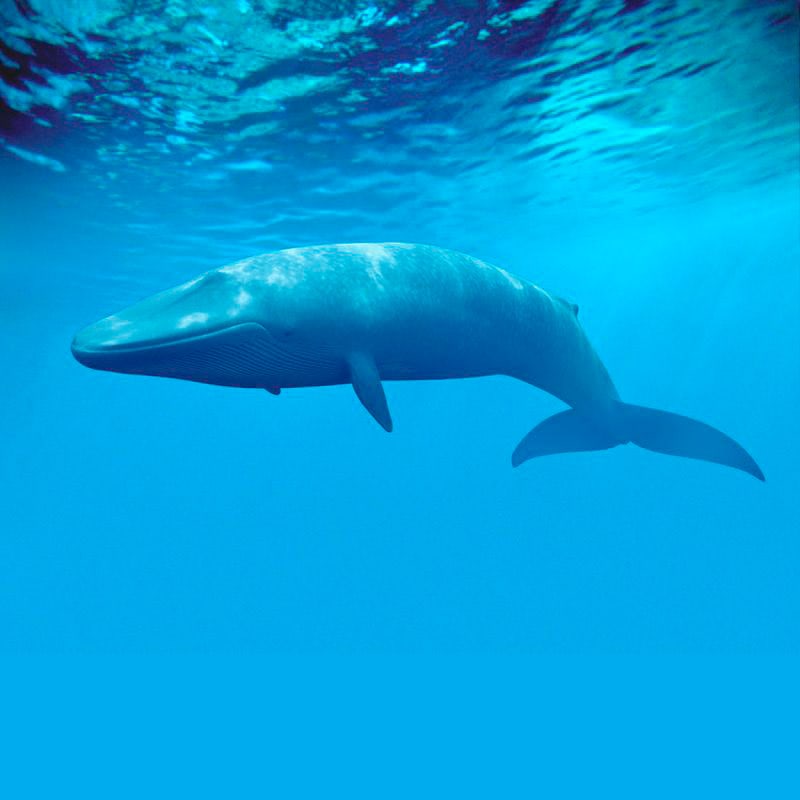
- The smallest is the Dwarf Sperm whale (a toothed whale) that grows up to 8.10 feet.
- Depending on the species, whales can live from 10 to 200 years.
- Whales can swim as fast as 30 miles per hour, and use echolocation to sense their surroundings.
- They often slap the water with their tails, when they come into contact with each other.
- Whales have an exciting way of sleeping. Only half of their brain sleeps in intervals of up to 15 minutes at a time, while the other half of their brain makes sure they continue breathing.
- Whale vomit is used in perfumes.
- A male whale is called a bull, a female is called a cow, and a baby or teenager is called a calf.
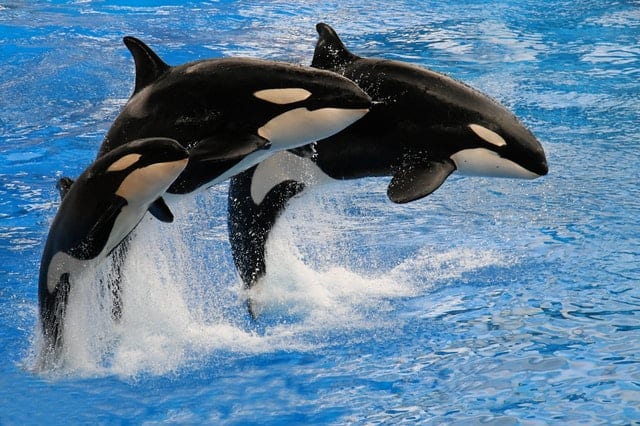
- A fossil of a four-legged whale was discovered in Peru.
- There are over 80 species of whales. Some of them are called orcas, sperm, humpback, beluga, blue, bowhead, gray, narwhal, and pilot whales.
- According to the World Wildlife Fund (WWF), it’s estimated that approximately 300,000 whales and dolphins are killed due to being struck by ships, irresponsible fishing, and loss of habitat.
- Today, many species, like the blue whale, are declared officially endangered by the Endangered Species Conservation Act. The most endangered whale species right now is the North Atlantic right whale, with less than 400 individuals remaining.
How to Celebrate World Whale Day
The most important thing you can do is educate yourself and learn what you can do as an individual to protect the whales, to be able to teach your preschoolers and their families, as well as your family and friends. These are some ideas:
Get to Know the Whales.
A good way to do this is by reading and watching documentaries about them. Once you have the information, share what you learned to help others get familiar with these amazing giants, and how you can contribute to making a safer place for them. Titans of the Deep – The Fascinating World of Whales is a good one.
Play Games.
I found two very cute games at everythingpreschool.com that you can do with your children. These are:
- Whale Pokey: invite children to act out the Hockey Pokey song, changing the body part for fins and tail.
- Whale in the Ocean: one of your children will be the whale, and the rest fish will try to cross the ocean. The whale tries to eat (tag) the fish. The children that are caught join the whale to try to catch more fish.
Do Whale Crafts.
There are many cute whale crafts that you can use for your preschoolers. You will find 16 pretty and easy-to-make crafts at simpleeverydaymom.com.
Offer Whale-related Snacks.
Stauffers Whales Baked Cheddar Snack Crackers are whale-shaped crackers that your preschoolers will love. These whale-shaped crackers can also be used to do Math activities like counting and subtracting.
Use Songs, Fingerplays, and Rhymes.
There is a lot about songs, fingerplays, and rhymes whales all over the internet, but I found a large collection at spotify.com.
Avoid Single-use Plastic Bags.
Unfortunately, millions of plastic bags fall into our oceans, and many whales swallow them thinking it is food. Every year a large amount of whales and other marine animals are found dead with many plastic bags on their stomachs.
Promote Fundraising for Whales
This is a great way to help collect funds for the organizations that protect the whales and get your preschoolers, and their families involved in a great cause. If you cannot do fundraising at your school or among your family and friends, investigate where fundraising events are happening, and help spread the word about them, so more people can contribute.
Do and Promote Recycling.
The more we recycle, the less amount of waste is going to end up in our oceans. Use reusable straws and shopping bags, and use recycled or recyclable products as much as possible.
Be a Responsible Boater.
Whales and other animals are on the water. Watch out for them when you are in a boat, to avoid getting them seriously injured by strikes or propellers.
Organize a Field Trip to Your Local Aquarium.
If a field trip is not possible, invite your families to go, so your preschoolers get to see many different marine creatures, like sharks, penguins, turtles, corals, dolphins, turtles, fish, etc. Some aquariums are large enough to include small whales like Belugas and when children and families in general see them, it gets them connected with this amazing world.
Promote and Be a Participant in Signing a Call to Action.
It’s powerful to become part of the groups that are asking legislators to support whale protection by creating stronger laws and policies, providing funds to enforce mandatory speed limits for water vehicles, and supporting the use of on-demand practices to remove vertical lines rather than entangling whales.
Don’t Waste Water.
The less water that is used in each household, the less excess will end up in the oceans. Showing your children how to be frugal in its use will encourage them to become participants today and in the future.
Use Non-toxic Chemicals.
There are a lot of natural products that you can use for your hygiene and to clean your house. You can find some at Women’s Fitness & Style, Tru Earth, smartsheepdryballs.com, and Gurl Gone Green.
Walk and Bike More.
Cars and other vehicles that use fuel are powerful contaminants. Cutting down on transportation pollution can make a big difference in ocean health.
Support Organizations that Fight for Whale Preservation and Protection.
If you cannot support one of these organizations financially, you can do it as a volunteer, and invite everybody you know to do the same. Below are the most important ones:
- The Whale and Dolphin Conservation (WDC), is the leading organization globally dedicated to the protection of whales and dolphins.
- The International Whaling Commission (IWC) is responsible for the management of whaling and the conservation of whales on the planet.
- Ocean Alliance tags the whales using a new, less invasive method for deploying their bio-logging tags.
- Sea Shepherd whose mission is “to end the destruction of habitat and slaughter of wildlife in the world’s oceans to conserve and protect ecosystems and species”, exposes illegal behavior that’s threatening marine life and protects the ocean.
- Save The Whales‘ mission is “to preserve and protect the ocean and its inhabitants”, focusing on education and teaching children about issues that affect the ocean and its inhabitants.
- Dolphin Project is a nonprofit organization whose mission is “to end dolphin exploitation and slaughter, as dolphins are routinely captured, harassed, slaughtered and sold into captivity around the world – all in the name of profit.” While this org is focused on dolphins, it also advocates for whales.
- Oceanic Preservation Society uses film, photography, social media, and collaboration to expose global environmental issues and promote advocacy for marine mammals.
- American Cetacean Society runs solely on volunteers, and their mission is to “protect whales, dolphins, porpoises, and their habitats through public education, research grants, and conservation actions.”
Create a Campaign Inviting Your Families to Adopt or Name a Whale.
You can do that through the Oceanic Society. Adopting a whale for one year only costs $60.00 and for two years $100.00m and naming one costs $1000.00. These donations are tax-deductible, and you will receive an adoption certificate with a photo and information about your whale and emails with news about it.
Use Your Social Media.
We all know how influencing is social media. Use it to educate and encourage people to take action to protect the whales.
Invite and Expert.
Many people are willing to come to the classrooms and talk to your children about whales, and what we can do to help protect them. Call organizations, universities, aquariums, and zoos in your area to ask around.
Whale-related Books
You can always read and add more whale-related books to your library or other centers, to give children a wide learning experience and variety to choose from. I’m sure the previous activities will spice up their curiosity about whales, and these books could be an excellent source of knowledge. Below are some of my favorites. You can find these books at your local library, used bookstore, and on Amazon. I added my Amazon affiliate links to the titles, to make it easier for you.
- Following Papa’s Song by Gianna Marino is a book that talks about two whales, a papa whale, and a baby whale called Little Blue, that are swimming together through the big ocean, while Little Blue asks many questions to Papa, especially ones about the long migration. How will they know the way? Will he be able to keep up? What will they see along the way?
- Secrets of the Whales by Brian Skerry. In this provocative book of photography, we learn that whales share an amazing ability to learn and adapt to opportunities, from specialized feeding strategies to parenting techniques.
- Whales: An Illustrated Celebration by Kelsey Oseid. A gorgeously illustrated, entertaining, and educational guide explores the most interesting and illuminating facts about these marine mammals.
- Encyclopedia of Whales, Dolphins and Porpoises by Erich Hoyt. This book is a fascinating compilation of the latest data on cetaceans and an impassioned argument for the ongoing need for international protection of at-risk populations and their increasingly damaged habitat.
- The Big Book of the Blue by Yuval Zommer. The book explains how different types of animals can breathe and survive underwater, and the different families to which they belong.
- The Snail and the Whale by Julia Donaldson. This is the story of a tiny snail that meets a humpback whale and travels together to far-off lands. A very sweet story about an impossible friendship.
- National Geographic Readers: Whales by Jennifer Szymanski. This book includes simple, expert-vetted text and large, engaging photos on every page.
- Song for a Whale by Lynne Kelly. Is the story of Iris, a deaf twelve-year-old tech genius. When she learns about Blue 55, a real whale who is unable to speak to other whales, Iris thinks about inventing a way to “sing” to him.
- Whales by Kay de Silva. The book uses captivating illustrations, and carefully chosen words to give children a well-rounded understanding of these beautiful creatures: their anatomy, feeding habits, and behavior.
- National Geographic Readers: Great Migrations Whales by Laura Marsh. This book explains how sperm whales will easily travel the circumference of the Earth in search of food and the need to breed and find a mate.
- A Whale of a Tale!: All About Porpoises, Dolphins, and Whales by Bonnie Worth. This book introduces kids to almost 20 different species—including sperm, right, humpback, and blue whales; Gulf, spectacled, and finless porpoise; and boto, common, hourglass, and bottlenose dolphins.
Pin It For Later
If you are in a rush and don’t have time to read the post and download the printable but want to save it for later, pin it to one of your Pinterest boards for later.
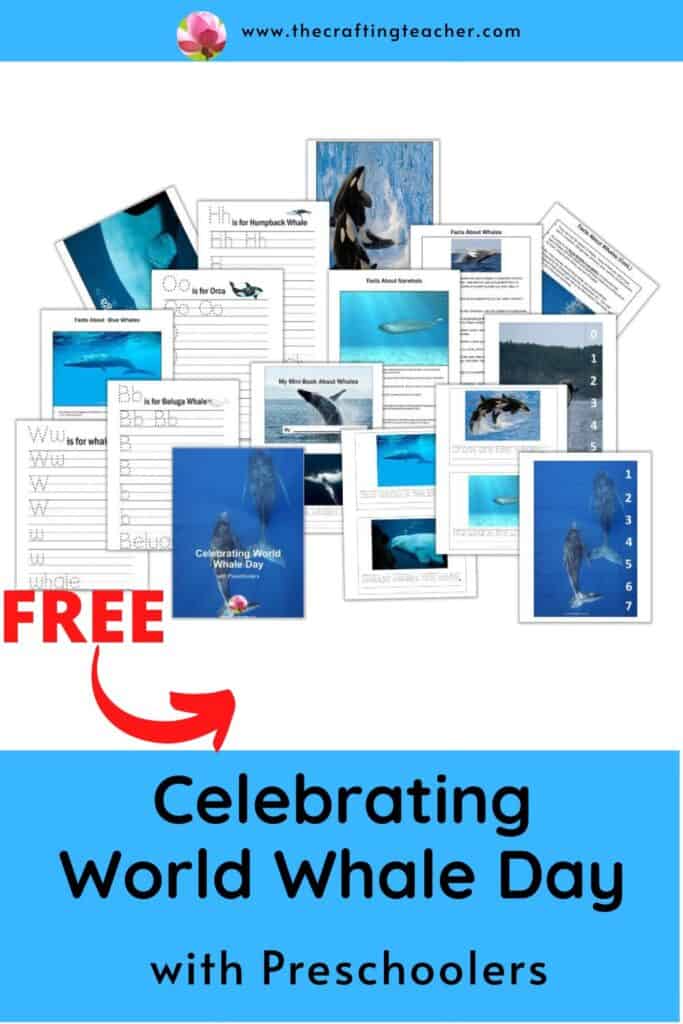
I hope you enjoy these ideas, and help you have fun during the World Whale Day celebration with your preschoolers. To get the FREE pack, you just have to click on the link below and put your information, for an immediate download.
Be happy, safe, and creative. I wish you well.
Love,

P.D. Please let me know if any of these ideas worked for you, or if you think I need to add or replace something. My goal is to help you in any way I can.

